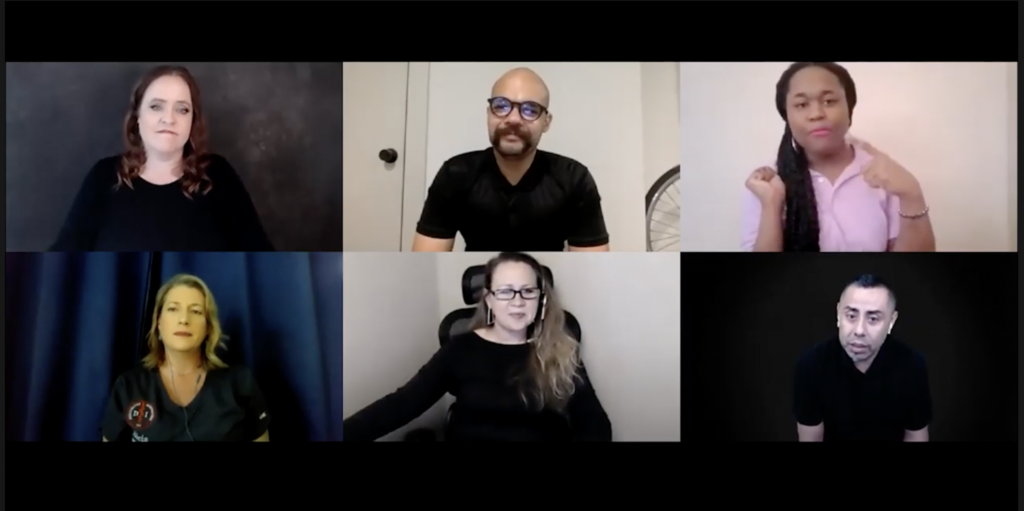Collaboration, Advocacy, and Understanding: Lessons from NDC’s Interpreting Panel

Interpreting services cannot be provided in a vacuum. Sign language interpreters have a range of knowledge, skills, and backgrounds. Those varied qualifications must be matched appropriately to the job at hand and the deaf person must be included in every step of the process.
Those were the key lessons from Improve Access Through Interpreting, a live online discussion hosted by the National Deaf Center on Postsecondary Outcomes (NDC) on April 29. Attendees had the opportunity to interact with a diverse group of experts, who shared their experience and knowledge.
Building Relationships Using Interpreting Services
Communication is key to building relationships, and interpreting services can make communication between deaf and hearing people better.
We have compiled a bevy of resources to help you increase knowledge and awareness of the variety of interpreting services available, standard practices in the field, and strategies for coordinating interpreting services. Our goal is to help you provide the highest quality access services possible.





